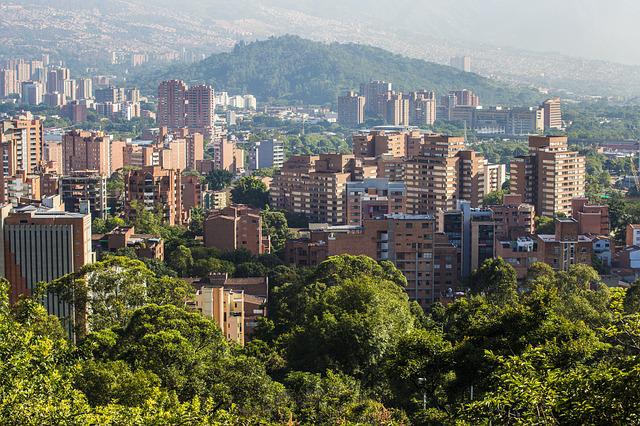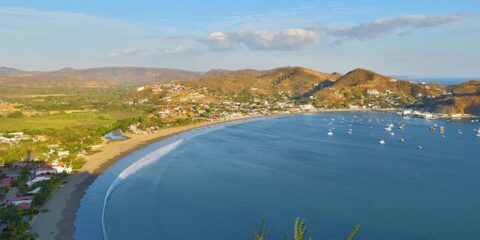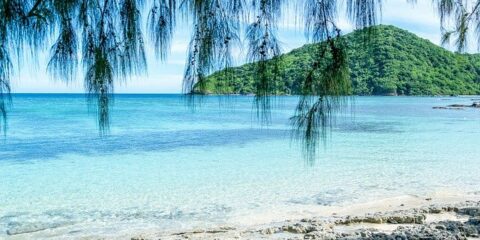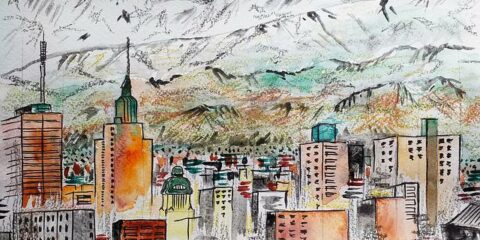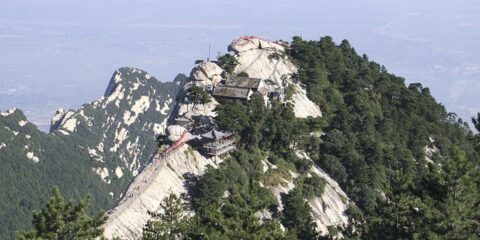The following content is only for reference and learning, and the ranking is not divided.
| Label | Name | Introduce |
| 1 | Cartagena | Cartagena is a port city located on the Caribbean coast in northwest Colombia. It is the capital of Bolivar province and the second largest city in Colombia. The city was founded in 1533, and its name comes from a city in Spain. Its petrochemical industry and tourism are very developed. Cartagena is not only an important port in northern Colombia but also a famous tourist attraction. Due to its proximity to the sea, Cartagena’s long coastline, blue sea water, and golden sand beaches constitute a beautiful and charming coastal scenery, becoming a tourist, summer resort, and Conference Center. The city is surrounded by water on three sides, with beautiful scenery. The whole city is verdant. The spires of ancient castles and churches are mixed with modern high-rise buildings of milky white and light blue, which set off each other and are full of harmonious beauty. Most of the buildings in this city were built in the 17th and 19th centuries. They are small two – or three-story buildings with Spanish architectural style. Although the buildings are low, they are elegant. |
| 2 | Barranquilla | Barranquilla is located in the Magdalene River Delta on the Caribbean Sea in the north of Colombia. It is the capital of the Atlantic province. The city is the largest city and seaport in the northern part of the Caribbean coast of Colombia, and the fourth largest city with the largest population in Colombia. Most of the buildings in Barranquilla were built in the 20th century, and some were built in the colonial period. However, most of the buildings were in the late 19th-century style, which was influenced by the Americans, Europeans, Middle East, and Asians living here. After years of development, Barranquilla has become a well-known tourist center. There are especially many people during Carnival and new year’s day. You can visit Barranquilla zoo, modern art museum, Carnival Museum, aviation museum, Caribbean Cultural Park, anthropological and Ethnological Museum, etc. Barranquilla is the place where the largest cultural festival in Colombia – Barranquilla carnival is held. This major festival was listed as Colombia’s cultural heritage in 2001 and was certified by UNESCO in 2003. |
| 3 | Bogota | Bogota is located on a rich plateau in the Andes. It is the capital of Colombia and the capital of Cundinamarca province. It is the largest city in Colombia and the fastest-growing city in South America. The city is the political, economic, cultural, and tourism center of Colombia and a good place for tourism. Bogota is known as the “Athens of South America” because of its beautiful scenery, spring-like seasons, numerous places of interest, and rich historical and cultural heritage. The city is a historical and cultural city with South American characteristics. Many places of interest in the city are well-known in the world. The University, museum, observatory, church, and other ancient buildings built in the 16th and 17th centuries have been well preserved so far. As an important traditional art and cultural center in the north of South America, there are many buildings and squares with historical, cultural, and tourist significance in the city of Bogota. Among them, the most famous square Bolivar is surrounded by many public buildings, churches, and monasteries. Simon Bolivar park is the largest urban park in the world. The salt church is the largest underground salt Church in the world and one of the largest religious buildings in the world. Guatavita reef is a place worth visiting. There are many museums in Bogota. In addition to the National Museum of Colombia and the colonial Art Museum, the golden Museum opened in 1938 is the most important museum in Bogota. The museum displays 38000 pieces of the world’s most important pre-Columbian gold art. In addition, Santa Clara is notable for its luxurious Baroque decoration: the gilded altar, the murals of local Baroque artists, and the vault covered with gold foil. |
| 4 | Medellín | Medellin is located in the north of the Andes Mountains in South America and belongs to Antioquia province. It is the second largest city in Colombia. The city is an important university, commercial, industrial, and technological area in Antioquia Province, and also a good place for festival celebrations and nightlife. The Latin Grammy winner rock musician juannis was born here. In the 21st century, with the construction of the metro in Medellin, the industry has been developed and safety and education have been improved, making it a tourist city. The city has a high altitude. The Medellin river runs through the city and flows northward, creating a mild spring climate, which has earned it the reputation of “Spring City”. Medellin has more than 40 museums, art galleries, and exhibition halls, which have become a beautiful scenic spot in the city. The Antioquia museum is the most important museum in Medellin and the most famous museum in Colombia. In addition, Medellin Modern Art Museum, Mineral Museum, Medellin Astronomy Museum, and Medellin art museum are also popular. |
| 5 | Cali | Cali is located in the west of Colombia. It is the capital of the Cauca Valley Province and the third largest city in the country. Founded in 1536, the city is now the cultural and economic center of Southwest Colombia. With rapid economic development, it is also the main sports center of Colombia. It is the only city in the country to hold the Pan American Games, the world games, and the world junior track and Field Championships. Kali is a popular tourist city, which can be divided into three categories, namely, historical tourism, conventional tourism, and medical tourism. Historical tourism mainly focuses on understanding the history and culture of the city. The scenic spots are concentrated in the center of the city and are well preserved. You can visit both the historic square and the ancient church. The so-called regular tourism is to visit the landmark buildings, parks, monuments, etc. in the city and enjoy the colorful nightlife of the city in the evening. Medical tourism can be said to be the most distinctive. Many people come here to seek low-cost cosmetic surgery. It is said that many beautiful women in Colombia are from the city’s plastic surgeons. |
| 6 | Santamaría Bullring | Since the 16th century, bullfighting has been popular in Colombia. Since Colombia’s independence, this tradition has been preserved and become a part of people’s life. If you want to watch a wonderful bullfight in Colombia, you need to go to the Santa Maria bullring in Bogota. The Santamaria bullring is located in Bogota, the capital of Colombia. It was built in 1931 and was donated by the farmer at that time (Ignacio Sanz de Santamaria), so the bullring was named after it. The bullring can accommodate 14500 people to watch the match. Every time it comes to the day of the match, there will be a sea of people and people will cheer for the bullfighters. There is a statue of Pepe C á Ceres outside the bullring. Pepe C á Ceres is the most famous bullfighter in Colombia. He is considered the most outstanding bullfighter in Colombia, and people revere him. |
| 7 | Caño Cristales | Cano critters river is located in Mehta Province, Southeast Colombia, South America. It is about 100 kilometers long and 20 meters wide. It is praised by many adventurers as “the river flowing out of heaven”. Cano Clijsters river is the most beautiful river in the world. Because there are a large number of algae and mosses of different types and colors on its riverbed, the river will show different colors in different areas, including green, blue, black, red, yellow, and more abundant gradients; The crystal clear river reflects the colorful moss on the riverbed and flows into the tidal pool like a kaleidoscope. It is very spectacular and beautiful. Therefore, the river is also known as the five-color river or the Rainbow River. Such a beautiful river naturally attracts the attention of a large number of tourists, but tourists should pay attention to the fact that the wonders of the wuse River can not be seen all year round, because in the dry season, the water is insufficient and the nutrients in the water are insufficient to maintain the large-scale reproduction of algae; In the rainy season, the water is too fierce, and the algae on the riverbed will be washed away. Therefore, only between June and September, when the dry season and rainy season alternate, will the Rainbow River show colorful colors. Moreover, it is not so easy to get to the location of this river, because the local transportation is inconvenient and there is no highway, so you must ride and walk and choose a suitable time to see the beauty of this magical river. |
| 8 | Las Lajas Sanctuary | Las Lajas church is located in the valley formed by the Gualala River in epialleles, Narino Province, Colombia. It is the only Valley Church in the world. Its name is derived from a shale sedimentary stone. It is known as one of the most beautiful churches in the world and one of the places people should visit in their life. Built-in 1916, Las Lajas church is a Roman Catholic Church. It is a Gothic-Renaissance building. There is another story about the construction of the church. In 1754, the American Maria Nueces and her deaf-mute daughter were trapped in the valley in a storm. Her daughter unexpectedly spoke and said, “my friends are calling me”, and saw the Virgin Mary manifest herself on a rock. Finally, they were found and rescued on a large impact rock. The first church built in the valley was built in the 18th century and was replaced in 1802. The current church was built in 1916. It stands high in the deep canyon, more than 100 meters high. A 50-meter-high bridge connects the church and the edge of the canyon, which is convenient for tourists and believers. |
| 9 | The Coffee Cultural Landscape of Colombia | The coffee cultural landscape of Colombia is an outstanding representative of a sustainable and productive cultural landscape. At the same time, it also represents a unique tradition, a tradition with a strong meaning for coffee-growing areas in the world. This heritage is located between the foothills of the Andes in Western Colombia and consists of 6 agricultural landscapes and 18 urban centers. The coffee planting tradition of over a hundred years here is mainly manifested in the small-scale planting in the arbor forest and the unique coffee planting method adopted by local farmers to overcome the adverse effects of the alpine environment. The urban area in the landscape is mainly located on the relatively flat mountain top, and the slope below the mountain top is distributed with coffee fields. The urban buildings are mainly the colonial buildings of Antioquia influenced by Spain. The building materials used in these buildings, which are still used in some areas today, are clay mortar mixed with straw and compressed sugar cane for walls, and clay tiles for roofs. |
| 10 | Port, Fortresses and Group of Monuments, Cartagena | Cartagena is close to the Gulf of the Caribbean Sea and has a very broad defense in South America. The city was cut into three regions; One is San Pedro, which has a cathedral and many Lucian styles; the other is San Diego, a residential area of businessmen and the middle class, and Gethsemani, which is reputed as a “public place”. Cartagena is the port and fortress of Colombia and has a number of cultural relics. It is the capital of Bolivar province and a tourist attraction. Cartagena is a remarkable example of the architectural style of the 16th, 17th, and 18th centuries. It is the most extensive and safest one in the “new world”. Cartagena and La Havana, as well as St. John’s potonrika, are military fortresses on a necessary passage in West India. The city’s buildings are in Spanish style, surrounded by ancient city walls and churches. The city’s coastal defense parapet is built on an open space similar to the land and water. Many palaces and churches are Baroque in appearance and have balconies overlooking the narrow streets. The most famous one is St. Peter Crawford Cathedral built in 1603, monasteries built in the 16th and 17th centuries, universities established in 1827, and ancient fortresses and castles for defending pirates. High-rise buildings, hotels, and restaurants are scattered in the colorful urban area. The long coastline, golden beaches, and endless blue sea make the coastal scenery beautiful and charming. |
| 11 | National Archaeological Park of Tierradentro | Pietro National Archaeological Park is one of the famous archaeological resorts in Colombia. A large number of ancient tombs are distributed in the park. The iron Trow National Archaeological Park includes many huge human sculptures and tombs from the 6th to the 10th century. These huge catacombs are decorated with patterns used for family interior decoration in this period. They all show that the early Latin American society living in the north of the Andes was prosperous and highly civilized. The underground tombs in tietro National Archaeological Park vary in depth, ranging from very shallow tombs to 20-foot deep tombs. The tomb is decorated with a large number of geometric patterns, which are drawn with red and black fuel on a white background. The walls of some tombs are painted with long and thin animals. The columns supporting the top of the tombs are often carved with triangles, Nordic faces, and deep-set eyes. A large number of statues similar in style to the statues of the St. Augustine archaeological site have also been excavated in the iron National Archaeological Park. There is also a museum in the park, which displays the unearthed pottery utensils reflecting the human civilization at that time and some antique utensils. |
| 12 | Plaza de Bolivar | Bolivar square is in the center of Bogota, formerly known as a central square. In 1536, Spanish colonists came here, crazy Indians, and drove them out of their homes. In 1538, the Spanish rulers began to build the city of Santa Fe in Bogota on this land full of Indian blood. Today, the ruins of the city building still remain on the square Bolivar. After the founding of the Republic of great Columbia in 1819, in order to commemorate Bolivar, the founder of the Republic and the liberator of Latin America, the central square was renamed Bolivar square. Bolivar is a famous strategist and politician in Latin America. In 1810, the armed uprising team organized by Bolivar drove the Spanish governor out of Venezuela, and he became the flag bearer for the independence and liberation of the Americas. The jubilant Bolivar statue standing on Bolivar square in Bogota was elaborately made by the famous Italian sculptor Pietro tenerani. In front of the statue, there are often flowers presented by people. The buildings with different shapes and styles around the square are magnificent. There are four fountains decorated with colored lights around the statue. At night, the square is brightly lit, and the water column from the fountain splashes everywhere. The whole square is colorful and unforgettable. |
| 13 | Historic Centre of Santa Cruz de Mompox | The historical center of Santa Cruz in months is a typical colonial town along the main water area, which plays an important economic and strategic role in the integrity of the country today. Founded in 1540 on the banks of the Magdalene River, months played a very important role in the Spanish rule of North and South America. From the 16th century to the 19th century, the city gradually developed parallel to the river, and some main streets acted as river banks. When it was established, it harmoniously merged with the surrounding landscape of the city. Most of the buildings still retain their original purposes, providing a special picture of the Spanish colonies. Each of the three squares in montpersia is decorated with a church. In addition to the religious monuments, these churches are the main witness of the local history. Many forms of brick houses in the 17th and 19th centuries had terraces and tile roofs, and the windows were decorated with metal lattices. Although many buildings are occupied by local residents, these buildings are adjacent to the rows of shops built after the 17th century. The more comfortable houses in the city are composed of hazelwood, round blocks, and thatched roofs, and the overall layout is harmonious and delicate. |
| 14 | Malpelo Fauna and Flora Sanctuary | The animal and plant reserve of Malpelo island covers an area of 857500 hectares, including the island of mapolo and the surrounding marine environment. This huge ocean park is the largest no-fishing area in the east of the tropical Pacific Ocean, providing an important living environment and a major food source for international endangered marine organisms. More than 200 hammerhead sharks, more than 1000 silk sharks, whale sharks, and tuna are gathered in the Malpelo Island animal and plant reserve. It is especially the habitat of sharks, groupers, and sharp-billed fish, and it is one of the few places in the world where the short-nosed coarse-toothed shark can be seen. This shark has been identified as a deep-water shark. The steep cliffs and the magnificent and colorful caves make it recognized as the world’s top diving resort. The deep sea water provides an undisturbed living environment for a large number of large carnivores and plankton, making them maintain their natural behavior. |
| 15 | Cauca, R. | The Cauca river is a river in Western Colombia, the largest tributary on the left bank of the Magdalena River, and the main river in Colombia. It originates from the paletara plateau of the central Cordillera mountains, flows northward through the wide and rich Cauca Valley, and passes through the canyon between the western and central Cordillera mountains. It is injected into the Magdalene River in the northwest of Mengpo, a lowland along the Caribbean coast. The total length of the Cauca river is 1350km, the water supply, and drainage systems area is 63000 square kilometers, the estuary water flow is 2200m / s, and the area below Caseres is navigable. There is a hydropower station near Kali. The soil in the Cauca Valley is fertile and rich in grain, sugar cane, cocoa, cotton, fruit, and livestock. The slopes on both sides produce three-quarters of the country’s coffee. The Koka river is developed according to the comprehensive planning of flood control, power generation, and irrigation. The riverside scenery is beautiful. It is a good place for sightseeing. The air is fresh and you can feel the breath of nature. There are many flowers and trees on both sides of the river. It is also a good opportunity for learning. There are many birds in the trees on both sides of the river, and you can hear the gentle singing of birds at any time. |
| 16 | Catedral de Sal | This church is the most holy place in the heart of Colombia. It is the crystallization of hundreds of years of hard work of generations. It has all kinds of facilities, from shops, prayer rooms, and toilets to spas and cinemas. However, from the perspective of the beauty of the landscape, some people may think that it is not brilliant, but considering the hard work and historical precipitation, these landscapes are particularly precious. In the beginning, the entrance of the church was a cross scenic area, which was slightly tasteless. When I walked to the main hall of the church, I was immediately conquered by its magnificent momentum. I hope you can go to see the film introducing the history of the salt church. Only when you see it will you cherish the grandeur of the whole project. Sipakila is a small Andes town located more than 50 kilometers north of Bogota city. What makes this South American Andean plateau town famous in the world is not the beautiful scenery, the beautiful mountains, and the Madalena river that quietly surrounds the town, but a huge underground world – a magnificent underground church that can accommodate 8000 believers at the same time. The predecessor of this church is the altars set up underground by the salt miners of the Indian aborigines under colonial rule. These altars are the witness to the 400-year colonial history of the small town of siparaki At the entrance of the salt church, there is a dummy model in a miner’s suit. Then we entered a long passage. The wall of the passage was decorated with changeable color lights and dim energy-saving lamps. Walk inward and pass several altars. The altars of the underground salt church are all simple cross shapes, creating a sacred and solemn atmosphere with colored lights. Behind those holy crosses, many of them have a huge dark underground space. When you look down on the side of the guardrail, you can see a shocking scene! The size, height, and width of those spaces can be compared with the vault space of a huge cathedral. However, they were submerged in the darkness! The depth and breadth of the space and the sense of fear brought by the darkness can only be felt when you are in the scene. |
| 17 | Museo de Oro | The last Sunday of each month is free. When the lucky star came, I got free museum tickets. It was indeed a worthwhile trip, especially after the explanation by the local people, I had an intuitive understanding of the various ethnic groups in Colombia. Great experience. The gold museum is one of the must-sees in Bogota. To be honest, I can hardly remember anything after reading it. I only know that the golden eyes of the blind dog also witness the glory of the indigenous people in those years. The ticket seems to be 4000 pesos, located near the Bolivian square. It’s free on Sunday. There were a lot of people when I went there. On the whole, I felt good. I introduced the bronze age, gold, and Indian history. At last, there was a small room full of gold, in which a valuable emerald was placed. It was the climax of the visit. However, there was a queue to visit this small room, and only a dozen people could enter it at a time. |


